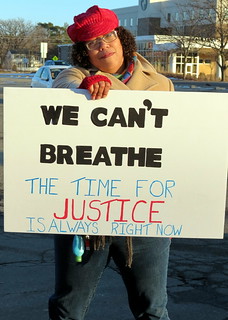The American criminal-justice system currently holds the world's largest population of incarcerated people, approximately 2.3 million at last count. It is a system that has people serving life sentences for non-violent offenses and, despite celebrated anecdotal instances of occasional leniency, tends to punish even the most trivial of offenders to the nth degree.
The stunning ease with which indictments and convictions are often obtained has resulted in a flood of false imprisonments. Stories of people spending decades in prison for crimes they did not commit are reported with sickening regularity, begging the question of how prosecutors can be allowed to wield such unchecked power. Incredibly, even when prosecutors are found to have engaged in deliberate withholding of exculpatory evidence, subornation of perjury, and other acts that subvert justice, meaningful accountability is absent. Numerous courts have held that prosecutors are immune from civil liability for such acts.
This unbridled and unchecked power has caused more than one prosecutor to brag about possessing the ability to "indict a ham sandwich." Being before anything else an extension of the prosecutor, the entire grand-jury process in America is ripe for whimsical outcomes and prosecutorial abuse. To obtain an indictment, all a prosecutor must do is present their best examples of inculpatory evidence, explain to the grand jurors how this evidence satisfies the elements of the charges being sought, and let the jury vote. The burden for indictment is nowhere near "proof beyond a reasonable doubt." A prosecutor must only show that it is more likely than not that a crime has been committed.
"If the prosecutor wants an indictment and doesn't get one, something has gone horribly wrong," said Andrew D. Leipold, a University of Illinois law professor who has written critically about grand juries. "It just doesn't happen."
The ease with which prosecutors obtain indictments allows for an overall indictment rate of about 98 to 99 percent. The rate of indictment is even higher in federal court where in 2010, the most recent year for which statistics are available, approximately 162,000 criminal cases were brought before grand juries with indictments being returned in all but 11 of them.
The grand jury is essentially a rubber stamp for prosecutors. This ability to completely control the grand jury's outcome is an invitation for endemic abuse.
Packing prisons with outright innocent and largely over-sentenced, over-prosecuted prisoners is one type of prosecutorial abuse. The statistical certainty of indictment virtually assures defendants that they will be subjected to trial, where conviction rates run as high as 99.5%. This leaves many who fall victim to an overzealous prosecutor with no choice but to plead guilty, regardless of their level of culpability. The problem has become so prevalent in federal court that a federal judge, USDJ Jed Rakoff, recently penned an article entitled "Why Innocent People Plead Guilty."
Rakoff's piece begins with an interesting observation. "The criminal justice system in the United States today bears little relationship to what the Founding Fathers contemplated, what the movies and television portray, or what the average American believes." It goes on to describe how a prosecutor "has all the advantages."
Recent events in Ferguson, MO, and Staten Island, NY, highlight another type of unchecked prosecutorial abuse. Two grand juries, one in New York where Eric Garner was choked to death by officer Daniel Pantaleo, the other in Missouri, where Michael Brown was fatally shot by officer Darren Wilson, defied the statistical certainty of indictment and failed to return criminal indictments against offending police officers. These were both highly anticipated grand-jury results with their respective decisions coming a little more than a week apart. Indictments failed to be returned despite a wealth of inculpatory evidence, including in the Garner matter videotape of the offending officer applying an illegal chokehold while the victim states 11 times that he could not breathe. The tape later shows police officers and EMT personnel failing to make any attempt at resuscitation.
(Note: You can view every article as one long page if you sign up as an Advocate Member, or higher).





